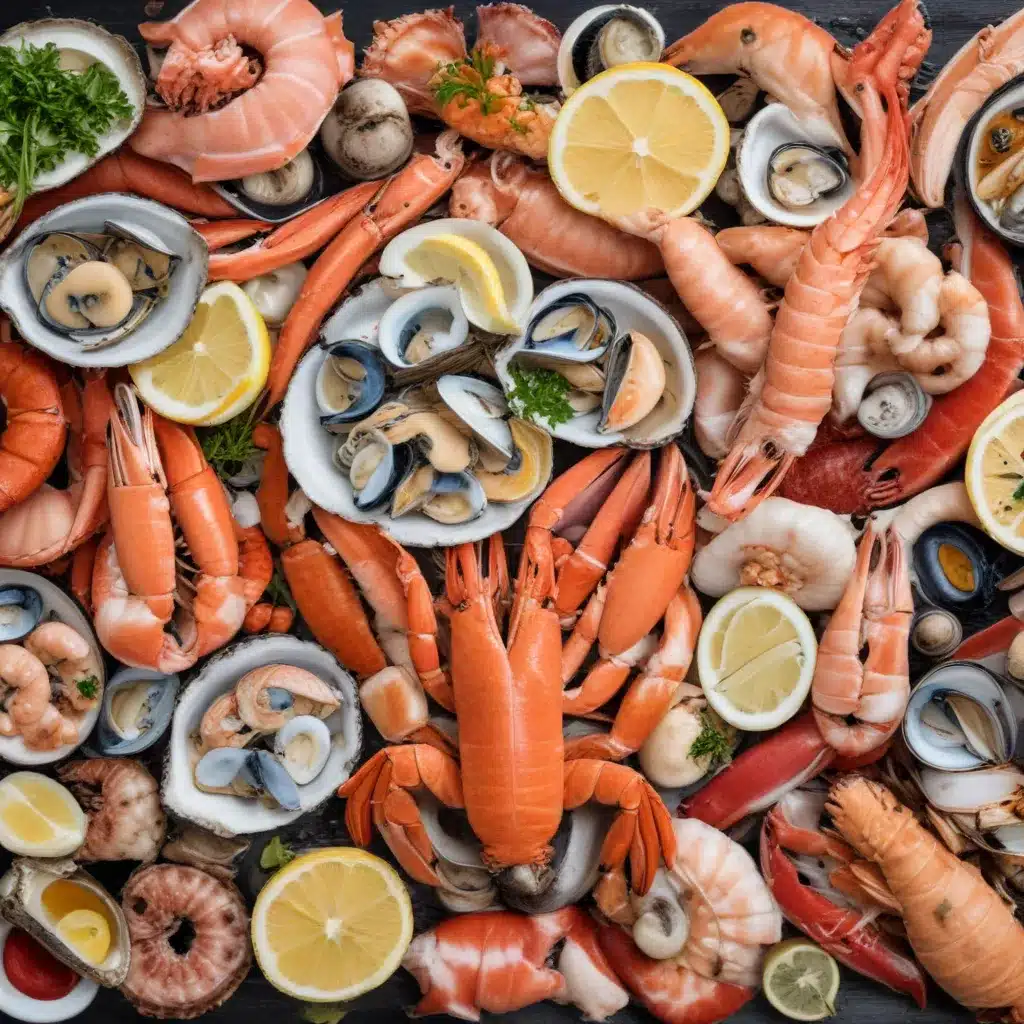
Are you a seafood enthusiast eager to showcase your culinary prowess? Look no further than the Seafood Trivia Showdown, where we’ll test your knowledge on all things fishy and fabulous. From the diverse world of crustaceans and mollusks to the finesse of finfish preparation, get ready to dive deep into an ocean of seafood trivia.
Types of Seafood
Let’s start with the basics. Crustaceans are a group of arthropods that include shrimp, lobster, crab, and crawfish. These versatile creatures are prized for their sweet, succulent meat and can be prepared in countless ways, from grilled and steamed to sautéed and baked.
Mollusks, on the other hand, encompass a wide range of shellfish, including oysters, clams, mussels, and scallops. These delicate bivalves are often enjoyed raw on the half-shell, steamed, or incorporated into delectable dishes like clam chowder and paella.
When it comes to finfish, the options are truly endless. From the mild, flaky cod to the firm, meaty tuna, each species offers its own unique flavor profile and culinary applications. Whether you prefer your fish baked, pan-seared, or poached, there’s a preparation method to satisfy every taste bud.
Seafood Preparation Techniques
Mastering the art of seafood preparation is key to unlocking its full potential. When it comes to cooking methods, you might opt for a classic grilled salmon or experiment with sous vide techniques to achieve perfectly tender, juicy results.
Preserving seafood’s freshness is also crucial, and techniques like brining, curing, and smoking can extend its shelf life while enhancing its flavor. And let’s not forget about creative presentation styles, such as en papillote (baked in parchment paper) or ceviche (marinated in citrus juices).
Seafood Nutrition and Health Benefits
Seafood is not only delicious, but it’s also incredibly nutritious. Crustaceans and finfish are excellent sources of high-quality protein, while mollusks are rich in vitamins and minerals like iron, zinc, and selenium.
Many types of seafood are also brimming with omega-3 fatty acids, which have been linked to a host of health benefits, from heart health to brain function. For those following a gluten-free diet, seafood can be a fantastic option, as long as it’s not breaded or fried.
Seafood Sustainability and Conservation
As seafood enthusiasts, it’s crucial that we support sustainable fishing practices and conservation efforts. Overfishing and environmental degradation pose significant threats to marine ecosystems, so it’s important to choose seafood from responsibly managed sources, such as those certified by the Marine Stewardship Council (MSC) or Monterey Bay Aquarium’s Seafood Watch program.
Aquaculture, or the farming of seafood, has also emerged as a viable solution, allowing us to meet the growing global demand for seafood while reducing the strain on wild populations.
Seafood Cuisine and Culinary Traditions
Seafood has been a staple in culinary traditions around the world for centuries. From the cioppino (seafood stew) of the Italian-American community to the bouillabaisse (fish soup) of Marseille, France, each region has its own unique way of celebrating the bounty of the sea.
Flavor profiles range from the delicate, umami-rich notes of sashimi to the bold, spicy accents of Cajun-style blackened fish. And let’s not forget the importance of wine pairings, with crisp white wines like Sauvignon Blanc or Albariño often complementing the briny, delicate flavors of seafood dishes.
Seafood Labeling and Regulations
When it comes to seafood, it’s important to be an informed consumer. Product labeling can provide valuable information about the species, origin, and method of capture or farming, while safety standards and traceability regulations help ensure the integrity of the seafood supply chain.
Understanding terms like “wild-caught,” “farm-raised,” and “sustainably sourced” can empower you to make more informed purchasing decisions and support the seafood industry’s efforts to promote responsible practices.
Seafood Market and Economy
The global seafood market is a complex and ever-evolving landscape, with intricate supply chains and shifting consumer trends. From the bustling fish markets of Tokyo to the artisanal seafood producers of the Pacific Northwest, the seafood industry plays a crucial role in local and international economies.
However, the industry also faces its fair share of challenges, such as overfishing, climate change, and the ongoing battle against illegal, unreported, and unregulated (IUU) fishing. As seafood enthusiasts, we can do our part by staying informed and supporting businesses that prioritize sustainability and transparency.
Seafood Trivia and Fun Facts
Now, let’s dive into some truly fascinating seafood trivia and fun facts:
- Did you know that the giant squid, one of the world’s largest invertebrates, can grow up to 43 feet (13 meters) in length?
- The Guinness World Record for the largest commercially caught cod weighed in at a staggering 98 pounds (44.5 kg).
- In some parts of the world, seafood is believed to have aphrodisiac properties, with oysters being a particularly coveted delicacy.
- The pufferfish, a delicacy in Japanese cuisine, contains a powerful neurotoxin that can be fatal if not properly prepared by a skilled chef.
So, there you have it – a comprehensive seafood trivia showdown that takes you on a delectable journey through the diverse and fascinating world of seafood. Whether you’re a seasoned sushi aficionado or a curious seafood newcomer, this article is sure to leave you with a newfound appreciation for the bounty of the sea. Now, it’s time to test your knowledge – are you ready for the challenge?

